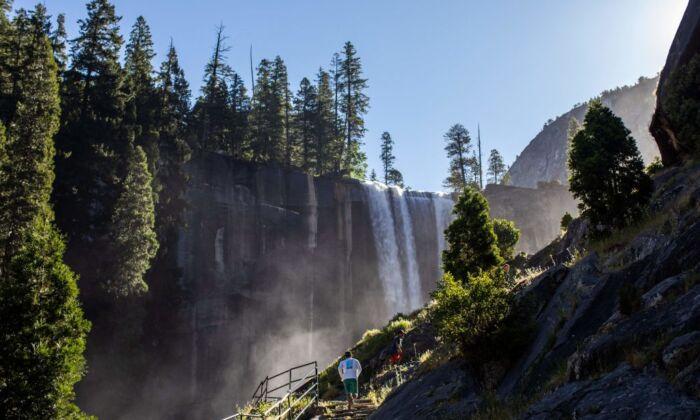Yosemite National Park is scrapping its reservation system for visitors next year and welcoming the public back with improved campgrounds and roads, park officials announced on Nov. 15.
With reservations, the park was able to limit the number of visitors during construction projects and the pandemic. But COVID-19 restrictions have been lifted and road and campground projects have been completed, Yosemite spokesman Scott Gediman told The Epoch Times.
“We’ve got all these improvements and new parking lots, so we’re feeling really good,” Gediman said. “We have improved traffic circulation. We feel like things are built and we can get people in, so we’re going to go with no reservations.”

Reservations could return and become part of the permanent plan, or the park may use other systems. The end goal is to create a good visitor experience, protect park resources, and provide safety for its employees and tourists, Gediman said.
The announcement drew mixed reactions on social media.
“Some of us have very unpredictable schedules and getting to go on a trip cannot be planned months in advance sometimes. Reservations also disappear in minutes when they are released online. Looking forward to new and creative ways to limit congestion though,” Wicks wrote.
“The reservation system provided us the most epic trip to Yosemite, not a single picture had a touron in it, no traffic, no lines, peace and quiet everywhere within the park. We enjoyed the park as it is meant to be enjoyed. I vote reservation system becomes permanent,” he wrote.

In 2020, the park started requiring visitors to make reservations, and visitor counts dropped. Before the COVID-19 pandemic, it regularly hosted between 4 million and 5 million visitors each year. The numbers dropped to nearly half after park officials instituted a reservation system and only saw about 2.4 million visitors that year.
Numbers remained lower last year—at 3.3 million—as reservations continued to restrict visitor numbers. The park, however, was still one of the top 10 most visited national parks in the nation.
It also spent the past three years improving access and roads and a campsite built in the 1930s, spending $25 million from the Great American Outdoors Act, passed in 2020.
Park officials are now asking for public input beginning in December to help design new visitor systems to ease traffic congestion, Gediman said.
The popular national park in central California has struggled with traffic for years.
Yosemite became the nation’s third national park in 1890 and is known worldwide for its waterfalls, towering granite monoliths, and ancient sequoias. Before that, former President Abraham Lincoln signed the Yosemite Land Grant in 1864 protecting the Yosemite Valley and area around the park. In the 1970s, rock climbers made the park famous by climbing El Capitan and Half Dome, cementing the park as a rock-climbers’ mecca.






